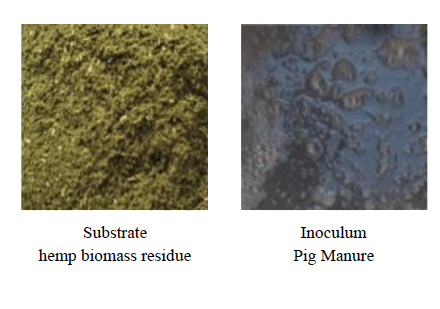The Potential of Biomethane Recovery from Hemp Biomass Residue (Cannabis sativa L.)
Keywords:
Hemp biomass residue, Biochemical methane potential, Biofuel, Biogas, Anaerobic digestionAbstract
Hemp (Cannabis sativa L.) is a plant with significant potential for use in the textile industry, medical applications, food and health benefits, environmental conservation, and as biomass fuel for renewable energy production. The initial raw material for hemp processing must undergo an oil extraction process to obtain hemp oil, resulting in residual material known as hemp biomass residue (HBR). Researchers are interested in utilizing this residue to produce biofuel energy through biogas technology using the biochemical methane potential test in 120 mL serum bottles. The temperature-controlled was at 35 ± 2 °C, and the experiment was conducted for 45 days. The study found that TCOD, TS, and VS removals were 57.32 ± 2.61%, 42.59 ± 4.18%, and 47.21 ± 3.52%, respectively. Cumulative biogas and methane yield were 109.61 ± 5.02 and 48.89 ± 2.69 N mL/g VS added. In addition, the maximum methane concentration was 71.64 ± 0.33%. Because of the above statement, future studies could focus on scaling up and studying technical and economic feasibilities. In addition, other anaerobic digestion strategies such as co-digestion, different inoculum sources, and different SIR to increase biomethane production potential should also be evaluated.

